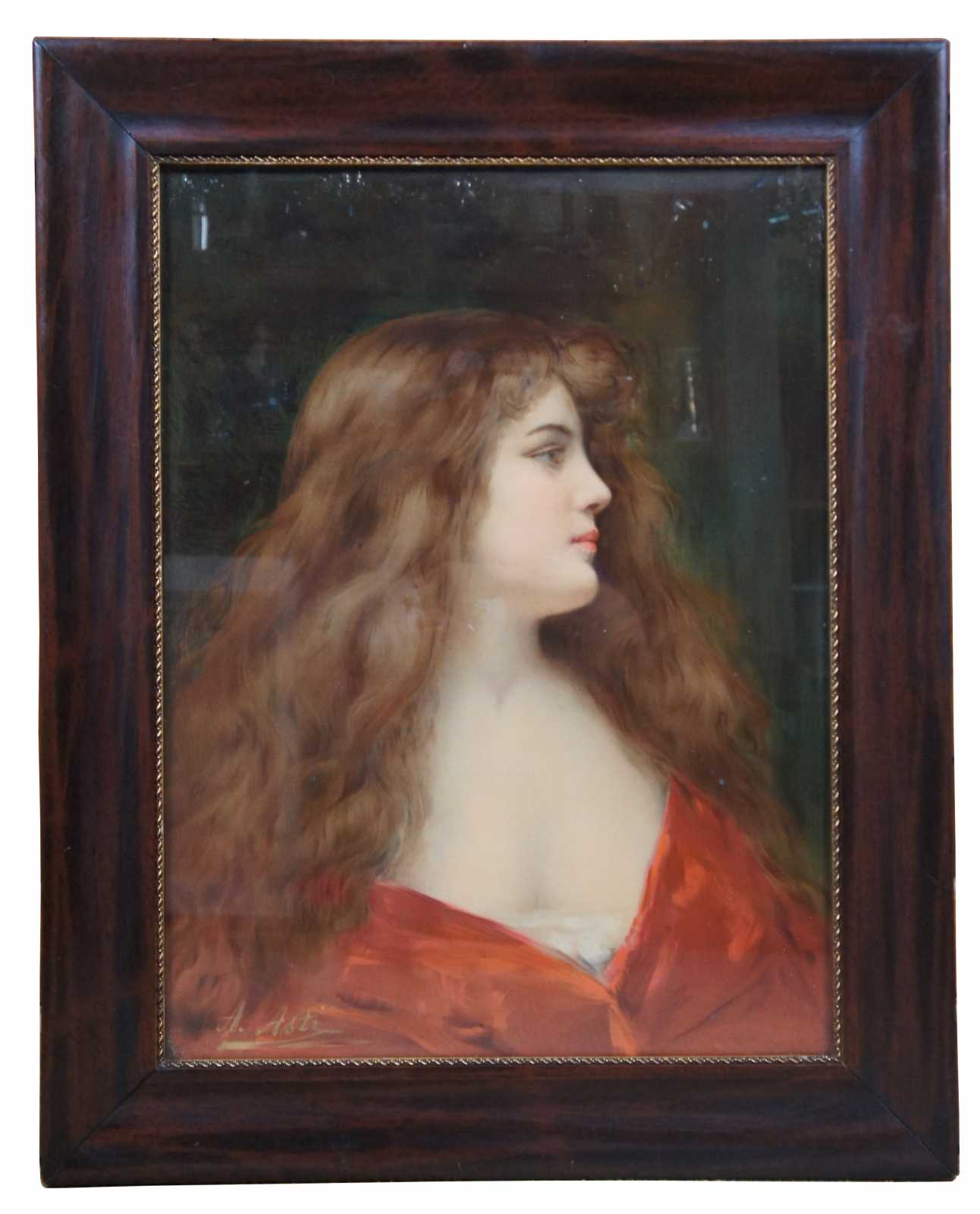
Shipping:
Free Shipping Included
Delivery:
Estimated 2-15 Business Days
Payments:
Credit Card, Check, Cash, PayPal, Apple Pay, Venmo
Returns:
30 Days 100% Money Back Guarantee, Buyer Pays Return Shipping
Description
Antique chromolithograph advertising print after Angelo Asti portrait of a maiden in red, Includes a Victorian era mahogany frame
Angelo Asti, Italian 1847 -1903
Everybody is familiar with that lovely picture, Innocence, which has been reproduced times without number and in every civilized land. But not everyone is familiar with the painter's almost romantic history, which terminated in his death in Mentone, France, in 1903. Most people suppose him to be a French artist, probably from the similitude of his figure pieces to French art. It is very proper to consider him as one of the Parisian artists, for he is so by association, and his rise and success all occurred in the city on the Seine. But Angelo Asti, for that is his name, was by birth an Italian. A little more that twenty years before his death a young Asti was a poor immigrant, bound for the United States, in quest of fortune, but for fame, that was not included in his dreams. He did not know that he possessed any particular artistic talent. There never had been, as far as he knew, an artist in his family. He had some little knack as a draftsman, but that is by no means rare among Italians.
Young Asti drifted west and was living in Cincinnati, when he secured employment as a designer in a lithographic house. While working there he developed a talent as an illustrator that was more of a surprise to himself than to any else. With this revelation came the desire to devote himself to more ambitious work. In 1890 he returned to Europe and settled in Paris. Instead of apprenticing himself to one of the great masters, or entering one of the schools of painting, he determined to perfect himself in the art unaided. He daily visited the Louvre and other famous galleries and applied himself seriously, persistently, and practically to the study of every minute detail of painting. At night, in his own room, he tried his hand upon original work, his fancy always running to figure painting.
From the outset his every impulse was dominated less by striking originality or virile force than by exquisite, harmonious beauty. He chose for his particular forte the painting of beautiful womankind, in which his ideal was to create the most perfect ensemble of face, form, grace of pose, and picturesqueness of drapery. His first finished work was admitted to the Salon that year, though the painter himself had no thought, in the first place, of submitting his canvas to the judges. He had sent it to the framer's to have a frame made. The framer was so entranced by the captivating beauty of the painting that he first urged and then begged Sig. Asti to send it to the Salon. It was not only awarded a high distinction, but created a sensation, a most unusual thing for the first exhibited work of an unknown artist.
The fascination exercised by the painting on the framemaker was the first of a long series of precisely similar triumphs that resulted in making Sig. Asti widely known.
He stood as a striking exemplar of that particular form of beauty that has always exerted the keenest fascination for men - a superbly beautiful woman. Year after year he sent to the Salon a new work in the same line, each succeeding painting being another revelation of exquisite loveliness.
Although such a comparative newcomer in the art world - his painting covers only twelve years - Sig. Asti's works command unusually high prices. Many of his work are in the United States and Canada, and the man who was once a modest employee in a Cincinnati art printing office, was at his death represented by some of the most popular paintings in the public galleries of America.
Sources include:
Howe, Julia, ""From a Poor Immigrant to a Famous Painter,"" The Bay View Magazine, 1906.
Condition
Good Overall - Light wear to frame; some dings to print; see pictures
Dimensions
24” x 0.75” x 30” / Sans Frame - 17.75” x 23.75” (Width x Depth x Height)